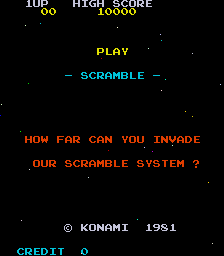Scramble
Game Information
| manufacturer | Konami |
| year | 1981 |
| cloned by | astroamb bomber explorer kamikazesp ncentury offensiv scrabbleo scramb2 scramb3 scramblb scramblebb scramblebf scramblebun scrambleo scrambler scrambles scrambles2 scrambp scramce scrammr scrampt scramrf spcmission spctrek strfbomb seainv |
| genre | Shoot-'Em-Up |
| downloads | 513 |
Screenshots










Download Details
| split set | scramble.zip 15.26k |
| merged set | scramble.7z 30.97k |
| standalone set | scramble.7z 12.14k |
| artwork | scramble.zip 42.11m |
Driver Details
| source | galaxian/galaxian.cpp |
| status | good |
| emulation | good |
| savestate | supported |
Series Details
Screen Details
| display | screen |
| type | raster |
| orientation | horizontal |
| width | 768px |
| height | 224px |
| refresh | 60.61mhz |
Input Details
| player | 1 |
| type | joy |
| buttons | 2 |
| directions | 8 |
| player | 2 |
| type | joy |
| buttons | 2 |
| directions | 8 |
Chipset Details
| name | Zilog Z80 |
| clock | 2.93mhz |
| name | Zilog Z80 |
| clock | 1.71mhz |
| name | Speaker |
| clock | N/A |
| name | AY-3-8910A PSG |
| clock | 1.71mhz |
| name | AY-3-8910A PSG |
| clock | 1.71mhz |
| name | Netlist Sound Device |
| clock | N/A |
ROM Details
| name | size | crc |
|---|---|---|
| s1.2d | 2.00k | ea35ccaa |
| s2.2e | 2.00k | e7bba1b3 |
| s3.2f | 2.00k | 12d7fc3e |
| s4.2h | 2.00k | b59360eb |
| s5.2j | 2.00k | 4919a91c |
| s6.2l | 2.00k | 26a4547b |
| s7.2m | 2.00k | 0bb49470 |
| s8.2p | 2.00k | 6a5740e5 |
| ot1.5c | 2.00k | bcd297f0 |
| ot2.5d | 2.00k | de7912da |
| ot3.5e | 2.00k | ba2fa933 |
| c2.5f | 2.00k | 4708845b |
| c1.5h | 2.00k | 11fd2887 |
| c01s.6e | 32.00b | 4e3caeab |